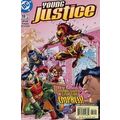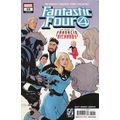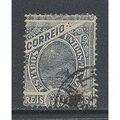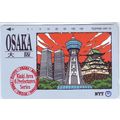Animal - Antelope - classic John Hinde postcard (Africa series) (2AF 87) c.1970s
- Condition : Used
- Dispatch : 2 Days
- Brand : None
- ID# : 195781789
- Quantity : 1 item
- Views : 182
- Location : United Kingdom

- Seller : justthebook (+1704)
- Barcode : None
- Start : Tue 29 Sep 2020 10:59:27 (BST)
- Close : Run Until Sold
- Remain : Run Until Sold
More Listings from This Seller view all
Seller's Description
- Postcard
- Picture / Image: Antelope / Antilope / Antilope [in Africa]
- Publisher: John Hinde (1 AF 87) - no photographer mentioned
- Postally used: no
- Stamp: n/a
- Postmark(s): n/a
- Sent to: n/a
- Notes / condition:
Please ask if you need any other information and I will do the best I can to answer.
Image may be low res for illustrative purposes - if you need a higher definition image then please contact me and I may be able to send one. No cards have been trimmed (unless stated).
------------------------------------------------
Postage & Packing:
Postage and packing charge should be showing for your location (contact if not sure).
No additional charges for more than one postcard. You can buy as many postcards from me as you like and you will just pay the fee above once. Please wait for combined invoice. (If buying postcards with other things such as books, please contact or wait for invoice before paying).
Payment Methods:
UK - PayPal, Cheque (from UK bank) or postal order
Outside UK: PayPal ONLY (unless otherwise stated) please. NO non-UK currency checks or money orders (sorry).
NOTE: All postcards are sent in brand new stiffened envelopes which I have bought for the task. These are specially made to protect postcards and you may be able to re-use them. In addition there are other costs to sending so the above charge is not just for the stamp!
I will give a full refund if you are not fully satisfied with the postcard.
----------------------------------------------
Text from the free encyclopedia WIKIPEDIA may appear below to give a little background information (internal links may not work) :
*************
John Wilfrid Hinde (17 May 1916 – 26 December 1997)[1] was an English photographer, whose idealistic and nostalgic style influenced the art of postcard photography and was widely known for his meticulously planned shoots.
Born in Somerset, England, his interest in colour photography arose during the 1940s. From the later half of the 1940s to the middle half of the 1950s, he entered the circus life, where he met his future wife. However, he soon returned to photography and, in 1956, he left the circus and founded John Hinde Ltd. in Dublin to produce and distribute his colour pictures of Ireland. Hinde's most famous work is that of the Butlin's holiday camps, in which he portrayed a welcoming and jubilant environment. In 1972, he sold his company to pursue his love of painting. The Irish Museum of Modern Art recognised his work with a retrospective in Dublin in 1993. In 1997, Hinde died in Dordogne, France. At the time of his death, millions of his postcards had been sold worldwide.
Hinde briefly switched professions when he became a circus publicity manager in 1944. Here, he met his wife Antonia Falnoga, a trapeze artist who was part of the circus. In 1954, he and Antonia started their own travelling circus company in Ireland named "The John Hinde Show." This venture quickly failed however and Hinde quit the circus business in 1956. He returned to his life as a photographer, and that same year, he founded John Hinde Ltd in Dublin.
Ireland photography
While travelling with the circus for twelve years, and in the years after, he began to take colour photographs of the Irish countryside. During this time, Ireland was becoming a popular destination for tourists. Black and white postcards were favoured because it was felt that this method could better capture the romantic landscape of Ireland. Hinde, a colour photographer, tried to find a way in which he could achieve the same or better effect with the addition of colour, something that would set his pictures apart from all the others. He hoped to capture the vividness of the Irish countryside, as well as the imagination of his audience. With much thought, he came up with a method that blended Irish stereotypes (donkeys, red-headed children, etc.) and the lush, seemingly endless, landscape with bright colours.
Hinde would sometimes enhance colours in his studio to get a desired effect. He was well known for setting up, or changing a scene so that it would fit his strict style. If he found something unpleasant or out of place in his pictures, he could simply cover it up or move it to get the best shot. So common was this practice that he kept a saw in the back of his car so that, if there happened to be an unsightly object in the view of his camera, he would chop down a nearby rhododendron bush and use it to conceal the eyesore. Needless to say, many rhododendron bushes appear in Hinde's Ireland postcards. This series of photographs was a huge success, not only with tourists, but also with the Irish people who enjoyed being reminded of the vibrant environment in which they lived.
Butlin's
From the late 1960s to the early 1970s, Hinde worked on his most widely known production: the Butlin Holiday Camps postcards. Billy Butlin had founded the camps as a place for working-class people to go for vacation, complete with high excitement and low cost. Butlin hired Hinde to produce postcards that reflected the spirited and enjoyable environment found at his camps. By this time, Hinde worked more as an art director than an actual photographer, so he hired two German photographers, Elmar Ludwig and Edmund Nägele, and one British photographer, David Noble. They travelled to the different camps and set up the necessary lights and photography equipment, often taking a whole day to make them just right.
Hinde's pictures portrayed holiday makers taking advantage of all of the things Butlin's had to offer, having a grand old time in the process. The photographers used large format cameras and Ektachrome film to capture the optimistic tone that Butlin was looking for. Scenes from the postcards included people eating in lavishly decorated dining halls, large indoor swimming pools, themed bars, and amusement park rides. Actual holiday makers were used in the shots, but like the Ireland pictures, the sets were often added to, to capture the energetic feeling of the setting. Hinde would often enhance certain colours later on so that the end result would be a lively, idealistic view of a Butlin vacation. The combination of the images of a fun-filled family vacation and the vivacious colour produced a nostalgic portrait for the masses.
Listing Information
| Listing Type | Gallery Listing |
| Listing ID# | 195781789 |
| Start Time | Tue 29 Sep 2020 10:59:27 (BST) |
| Close Time | Run Until Sold |
| Starting Bid | Fixed Price (no bidding) |
| Item Condition | Used |
| Bids | 0 |
| Views | 182 |
| Dispatch Time | 2 Days |
| Quantity | 1 |
| Location | United Kingdom |
| Auto Extend | No |



 for 1 item(s)
for 1 item(s)

















